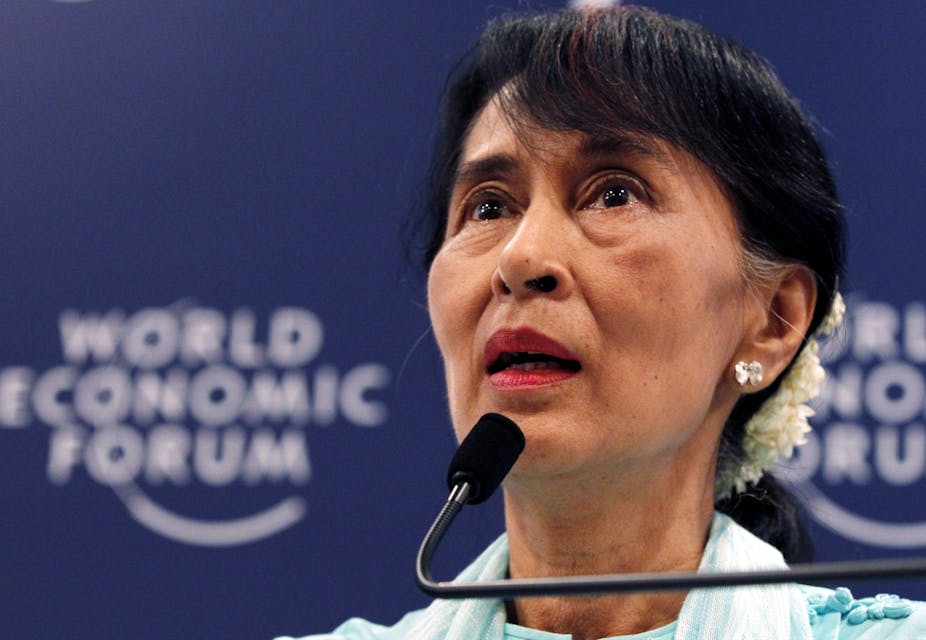On June 1, after decades of struggle to be a legitimate voice for the Burmese people, Aung San Suu Kyi addressed the World Economic Forum on East Asia in Bangkok. She did not raise a call to arms or popular uprising. Her plea was simple: “we need basic education in Burma, the kind of education that will enable our people to earn a decent living for themselves”.
This is not the first time that the leader of the National League for Democracy has pointed to education as a transformational force. In 1997, still under house arrest, Aung San Suu Kyi was asked what values of Burmese society she wished most to preserve. Her answer was “the Buddhist values of loving-kindness and compassion, a respect for education”.
Burma has only earlier this year had its first free and democratic elections after decades under strict military rule. Ethnic and religious violence in the country’s west may already be affecting Burma’s fragile progress. But if the country invested now in education, it could build a new future from this destructive past.
Respect for education
In the 1950s, Burma had the highest literacy rate in Asia. In 60 years, the rate has plummeted. The military government has now recognised that fundamental reforms are needed if the country is to engage with trading partners in Asia and the world. Progress is being made towards democratic elections in 2015 and this move has resulted in some countries lifting economic sanctions, albeit cautiously.
Slow progress in Burma can perhaps be explained, if not understood. Historically, the country has suffered attempts at invasion from China, a difficult colonial experience with the British and a devastating war perpetrated by the Japanese. Furthermore, Burma is still reeling from one of the longest civil wars in history, fuelled by a diverse and volatile patchwork of ethnic groups seeking representation or independence. This has led the military rulers towards isolation and centralised control.
During the turmoil of the 1990s, the chairman of the Myanmar Education Committee was also Chief of Military Intelligence. This could be seen as pure Orwellian irony. But this ignores the respect that every Burmese has for education, whether they are a military ruler, democratic leader, factory worker, monk, political prisoner or street vendor.
The problem has not been about priority, but about the control of education as a force capable of driving either freedom or repression.
A force for democracy
Education is one of the three pillars of Burmese society alongside armed strength, represented by the military, and spirituality, represented by the monks.
Student political power in Burma was born in 1920 when university students called for a national strike. This evolved in the 1930s into the Do-Bama Asi-Ayon (We Burmans Association), a student/Buddhist movement that provided the agenda for defeating British imperialism by the Thirty Comrades.
This group, led by Aung San, father of Aung San Suu Kyi, formed the Burma Independence Army. In a feat of superpower juggling, Aung San and his comrades harnessed the might of Japan to drive out the British, then fought alongside the British to drive out Japan. Burma became truly independent and the great historical alliance between the forces of arms, spirituality and education promised cultural unity in a nation of ethnic diversity.
But when Aung Sang was assassinated in 1947, tragedy unfolded, culminating in the Burma we see today. The economy is at one of the lowest levels in the world, in spite of a wealthy bank balance of natural resources in oil, timber, precious metals and people.
A brighter future?
And therein lies the rub. Burma is sandwiched between two emerging superpowers of the 21st century: India and China. The USA too has strong presence in the Indian Ocean region. Aung San Suu Kyi is aware of this, as she said recently at the World Economic Forum: “Burma should not be a battling ground…it should be an area of harmony for those big countries.”

Many Burmese people remember, or have been taught, that their country has been here before – subject to the unwanted attention of superpower hegemony. Yet, with stupendous bravery, a quality for which they have earned fame in many wars, most Burmese see education, not warfare, as the way to achieve democracy and national strength.
In Burmese refugee camps, the Reading Writing and Critical Thinking (RWCT) movement has taken hold, joining developing countries in Eastern Europe, Latin America and Asia in adopting a way for individuals to decide how they approach problems in their own country. Burma now has about 200 teachers specially trained in RWCT methods.
There is no lack of words from the Burmese government, even though the education spend – 1.3% of GDP – is still very low by international standards. The Minister for Education has pledged a review to focus on raising standards and to accelerate a 30-year education plan launched in 2001.
But most observers stress that it is the way any money is used that is important, citing the need for education reform to be part of an inclusive development with health and the economy. This means jobs for educated people to fill.
Burma could open up as the next Asian tiger or close up shop again. Given that it will be hosting the ASEAN Summit conference in 2014 it is unlikely that it will choose the latter course. A slow but steady road to a Burmese form of democracy is more on the cards.
There is a long way to go. But the Burmese may yet teach Australia the benefits of seeing basic education as the engine of a more vibrant and confident society.

